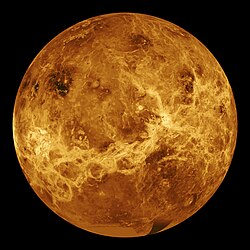Planets/Sciences/Quiz
< Planets
(Redirected from Planetary science/Quiz)
Planetary sciences is the lecture about planets and planetary systems. It is included in the course on the principles of radiation astronomy.
You are free to take this quiz based on the lecture at any time.
Once you’ve read and studied the lecture itself, the links contained within the article/lecture, listed under See also, External links, and in the {{principles of radiation astronomy}} or {{radiation astronomy resources}} templates you should have adequate background to score 100 %.
Suggestion: Have the lecture available in a separate window.
The quiz may be taken as many times as you wish to help improve your score and increase your knowledge.
Enjoy learning by doing!
Quiz[edit | edit source]
Hypotheses[edit | edit source]
- The science of planetness concerns the effects on the astronomical object from its orbiting a star, or more than one star.
See also[edit | edit source]
External links[edit | edit source]
- NASA/IPAC Extragalactic Database - NED
- The SAO/NASA Astrophysics Data System
- SIMBAD Astronomical Database
{{History of science resources}}
{{Radiation astronomy resources}}